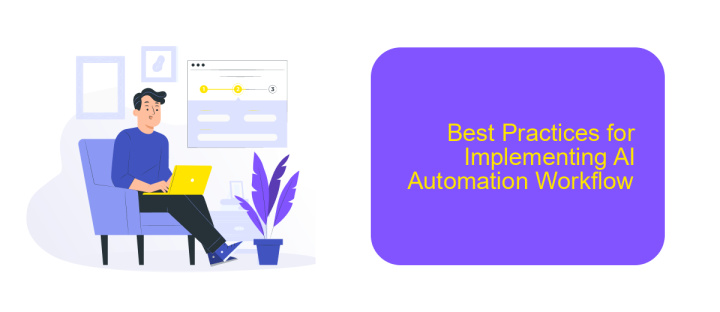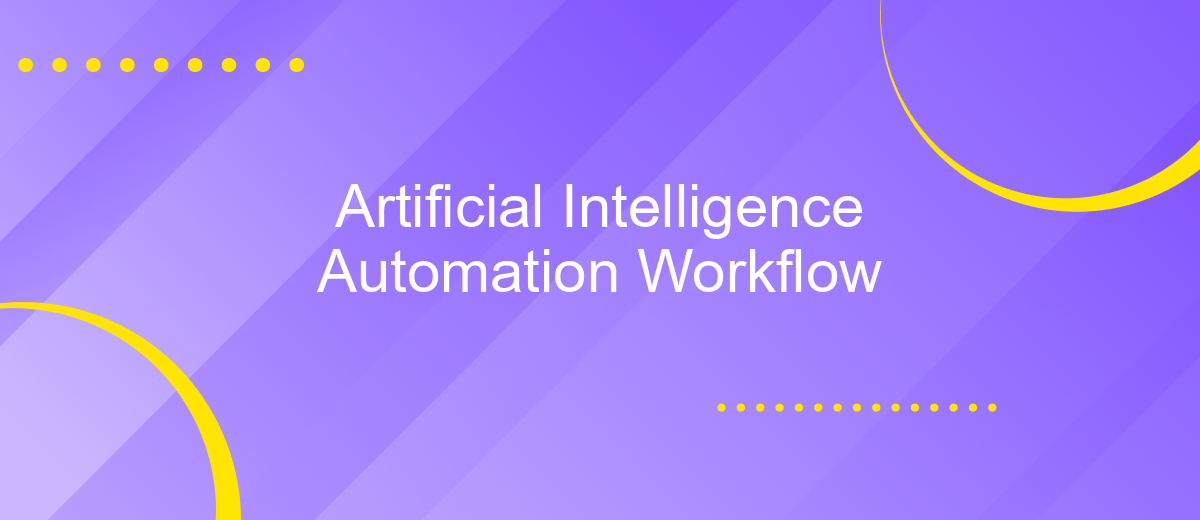Artificial Intelligence Automation Workflow
Artificial Intelligence (AI) is revolutionizing the way businesses operate by automating complex workflows. From streamlining mundane tasks to enhancing decision-making processes, AI-driven automation offers unparalleled efficiency and accuracy. This article explores the transformative impact of AI on workflow automation, examining key technologies, benefits, and real-world applications that are reshaping industries across the globe.
Introduction
Artificial Intelligence (AI) has revolutionized various industries by automating complex workflows and enhancing efficiency. The integration of AI into automation workflows streamlines processes, reduces human error, and allows for more strategic decision-making. This transformation is evident in sectors ranging from healthcare to finance, where AI-driven automation is becoming indispensable.
- Increased efficiency through process automation
- Reduction of human error
- Enhanced decision-making capabilities
- Scalability and adaptability to various industries
One notable tool aiding in the seamless integration of AI into workflows is ApiX-Drive. This service simplifies the process of connecting various applications and automating data transfers, ensuring that AI systems can operate without interruption. With ApiX-Drive, businesses can easily set up integrations, monitor performance, and adjust workflows as needed, making it an essential component of modern automation strategies.
Benefits of AI Automation Workflow

Implementing AI automation workflows offers numerous advantages, significantly enhancing efficiency and productivity across various sectors. By automating repetitive and time-consuming tasks, businesses can allocate their human resources to more strategic and creative endeavors, driving innovation and growth. AI-driven processes also minimize the risk of human error, ensuring higher accuracy and reliability in operations. This leads to improved quality of outputs and customer satisfaction, as well as a reduction in operational costs.
Moreover, AI automation workflows facilitate seamless integration with various tools and platforms, streamlining data flow and communication. Services like ApiX-Drive enable businesses to easily connect different applications and automate data transfers without the need for extensive coding knowledge. This integration capability allows for real-time data synchronization, providing up-to-date information that supports better decision-making. Ultimately, the adoption of AI automation workflows empowers businesses to operate more efficiently, respond swiftly to market changes, and maintain a competitive edge.
Challenges of AI Automation Workflow

Implementing AI automation workflows presents several challenges that can hinder efficiency and effectiveness. These challenges often stem from the complexity of integrating various systems and ensuring seamless communication between them. Additionally, maintaining the accuracy and reliability of AI models is a continuous process that requires significant resources and expertise.
- Data Quality: Ensuring high-quality, clean data is essential for accurate AI predictions and decisions.
- Integration: Connecting disparate systems and platforms can be difficult, requiring robust solutions like ApiX-Drive to streamline integrations.
- Scalability: As workflows grow, maintaining performance and efficiency becomes increasingly challenging.
- Security: Protecting sensitive data and ensuring compliance with regulations is critical in AI automation.
- Human Oversight: Balancing automation with human intervention to handle exceptions and make critical decisions.
Addressing these challenges involves a combination of strategic planning, advanced tools, and continuous monitoring. Solutions like ApiX-Drive can significantly simplify the integration process, allowing businesses to connect various applications and services effortlessly. By focusing on these key areas, organizations can optimize their AI automation workflows and achieve greater operational efficiency.
Best Practices for Implementing AI Automation Workflow

Implementing an AI automation workflow requires careful planning and execution to ensure efficiency and effectiveness. One of the first steps is to clearly define your objectives and understand the specific tasks that AI will automate. This helps in setting realistic expectations and measuring success.
Another crucial aspect is selecting the right tools and platforms that align with your business needs. For instance, integrating various applications and services can streamline your workflow significantly. ApiX-Drive is an excellent tool for this purpose, offering seamless integration capabilities that can connect multiple systems effortlessly.
- Clearly define objectives and tasks for AI automation.
- Choose the right tools and platforms like ApiX-Drive for integration.
- Ensure data quality and consistency across all integrated systems.
- Regularly monitor and evaluate the AI workflow for improvements.
Lastly, continuous improvement is key. Regularly monitor the performance of your AI automation workflow and make necessary adjustments. This iterative process helps in refining the system, ensuring it remains aligned with your evolving business goals.
Future of AI Automation Workflow
The future of AI automation workflow is poised to revolutionize various industries by enhancing efficiency and reducing human error. As AI continues to evolve, it will become increasingly adept at understanding and executing complex tasks without human intervention. This will enable businesses to streamline their operations, making processes more agile and responsive to market demands. The integration of machine learning algorithms will further refine these workflows, allowing for predictive analytics and real-time decision-making capabilities.
One of the key aspects of this future lies in the seamless integration of various tools and services. Platforms like ApiX-Drive will play a crucial role in this transformation by providing businesses with the ability to easily connect disparate systems and automate data flows. This will not only save time but also ensure data consistency and accuracy across platforms. As AI-driven automation becomes more prevalent, the demand for such integration services will grow, further accelerating the adoption of AI technologies in everyday business operations.
FAQ
What is Artificial Intelligence Automation Workflow?
How can AI automation improve business processes?
What types of tasks can be automated using AI?
How do I integrate AI automation into my existing workflows?
What are the challenges of implementing AI automation?
Time is the most valuable resource in today's business realities. By eliminating the routine from work processes, you will get more opportunities to implement the most daring plans and ideas. Choose – you can continue to waste time, money and nerves on inefficient solutions, or you can use ApiX-Drive, automating work processes and achieving results with minimal investment of money, effort and human resources.

